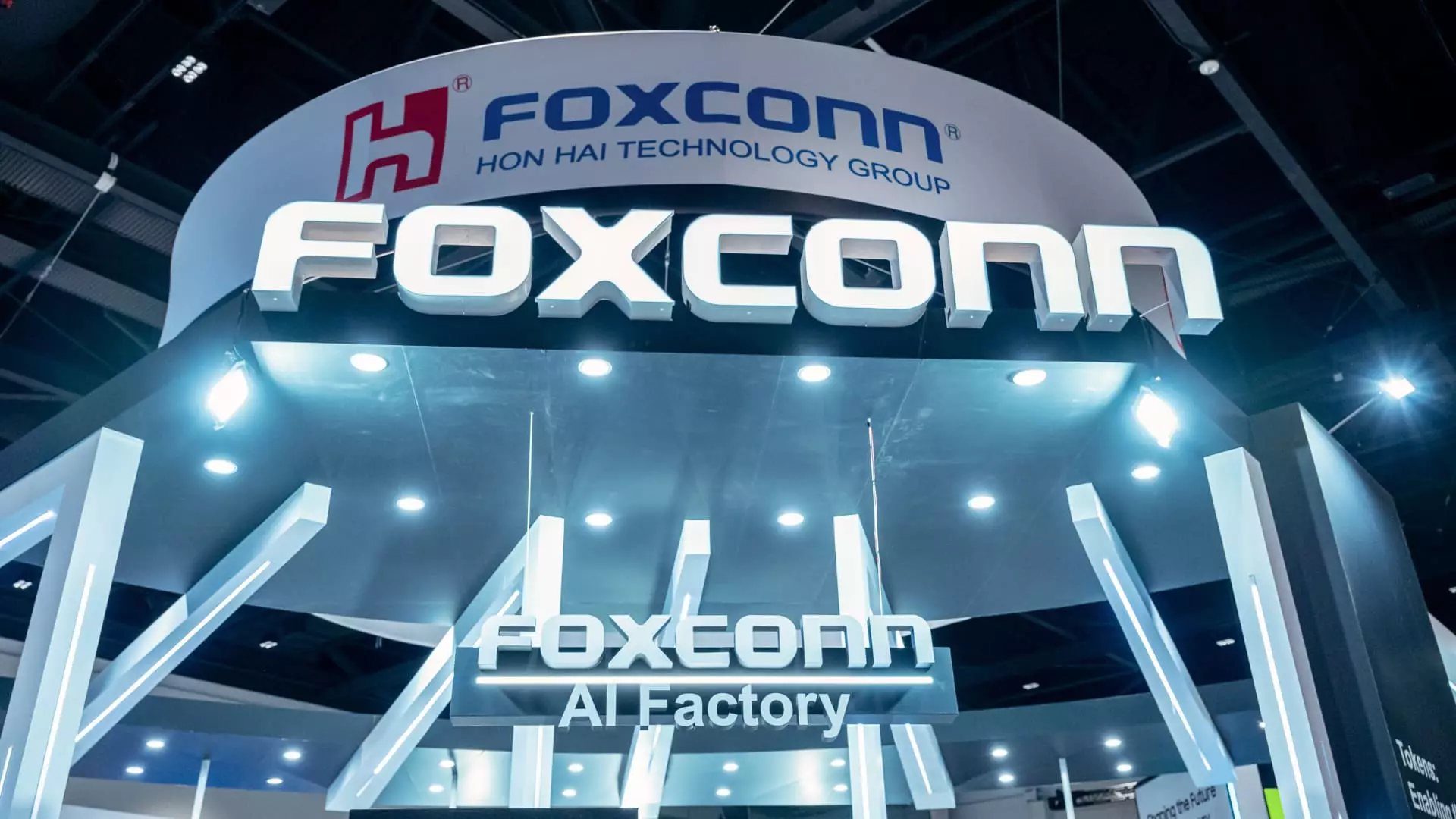Foxconn, the behemoth that has long been synonymous with manufacturing prowess, is currently defying many skeptics’ expectations. While the business landscape is riddled with uncertainties—from geopolitical tensions to economic downturns—the Taiwanese giant demonstrates an impressive resilience, driven not just by traditional manufacturing but by a strategic pivot into high-growth sectors like artificial intelligence. This successful transition reveals something profound about the company’s adaptive mindset, highlighting a crucial lesson: in today’s world, survival hinges on the ability to evolve faster than the storm around you rather than merely riding the wave of current success. Foxconn’s second-quarter results are not just numbers; they are a statement of intent and an act of strategic cunning.
Reinventing the Manufacturing Paradigm
Historically, Foxconn has built its empire assembling consumer electronics, with Apple’s iPhone standing as its crown jewel. Yet, this dependency on consumer gadgets, vulnerable to market fluctuations and geopolitical risks, is no longer sufficient. The company’s surge in AI server manufacturing—accounting for over 40% of revenues—signals a purposeful diversification that leverages its deep manufacturing expertise, while also aligning with the booming AI industry. This shift is not accidental; it’s orchestrated. Foxconn is betting on AI-as-a-service and data center demands, sectors less prone to the short-term poking of tariffs but increasingly vital for global digital infrastructure. To me, this resilience is a testament to their forward-looking vision—a recognition that agility and strategic focus are more valuable than stubbornly sticking to old models.
Geopolitical Challenges: The Double-Edged Sword
No discussion of Foxconn’s recent triumphs would be complete without acknowledging the geopolitical minefield it navigates. U.S.-China tensions, tariffs, and trade restrictions loom large over the industry’s future, and Foxconn is no stranger to these challenges. Moving production to India and committing to massive investments in the U.S. are not just business decisions—they are geopolitical gambits. While tariffs threaten to inflate costs and complicate supply chains, Foxconn’s strategic diversification into North America reflects a calculated effort to insulate itself from disruptive policies, or at least to adapt more quickly than its competitors. It reveals a fundamental truth: in the modern era, economic survival is increasingly about strategic repositioning rather than sheer scale alone.
The Political Environment and Its Impact on Business Strategy
From a center-right perspective, these developments are a test of national resilience and economic sovereignty. Foxconn’s response to tariff threats—moving production, investing heavily in the U.S.—embodies a pragmatic approach to safeguarding profitability while maintaining leverage in international negotiations. This is a nuanced dance; it is neither blindly nationalistic nor overly submissive. Instead, it exemplifies a realistic balancing act—embracing globalization’s benefits while actively mitigating its risks. Foxconn’s strategy demonstrates how businesses can assert themselves in a globally intertwined market by leveraging their capacity for rapid adaptation and strategic investments, a lesson that policymakers should heed as they craft the future economic landscape.
The Forward-Looking Vision in a Chaotic World
While many critics highlight the perils of over-reliance on Chinese manufacturing or too much dependence on volatile geopolitical climates, Foxconn’s approach exemplifies pragmatic realism. It recognizes that in today’s interconnected world, success is less about avoiding risks altogether and more about managing and redistributing them wisely. The company’s investments in AI, semiconductors, and electric vehicles show a keen understanding that the future belongs to diversified, technology-driven manufacturing hubs. Their willingness to challenge traditional notions of supply chains underscores the importance of resilience—not just in corporate strategy but in national economic architecture. This resilience, however, depends heavily on the political will to foster an environment where adaptable, innovative companies like Foxconn can thrive despite external uncertainties.
In sum, Foxconn’s recent quarter is more than a financial report; it is a case study in strategic adaptation. Its ability to pivot, diversify, and invest across borders demonstrates a commendable resilience that, in my view, is essential for thriving amid chaos. Such capacity to innovate within a constrained geopolitical landscape reflects a maturity that separates the merely surviving from the truly succeeding in our unpredictable global ecosystem.

